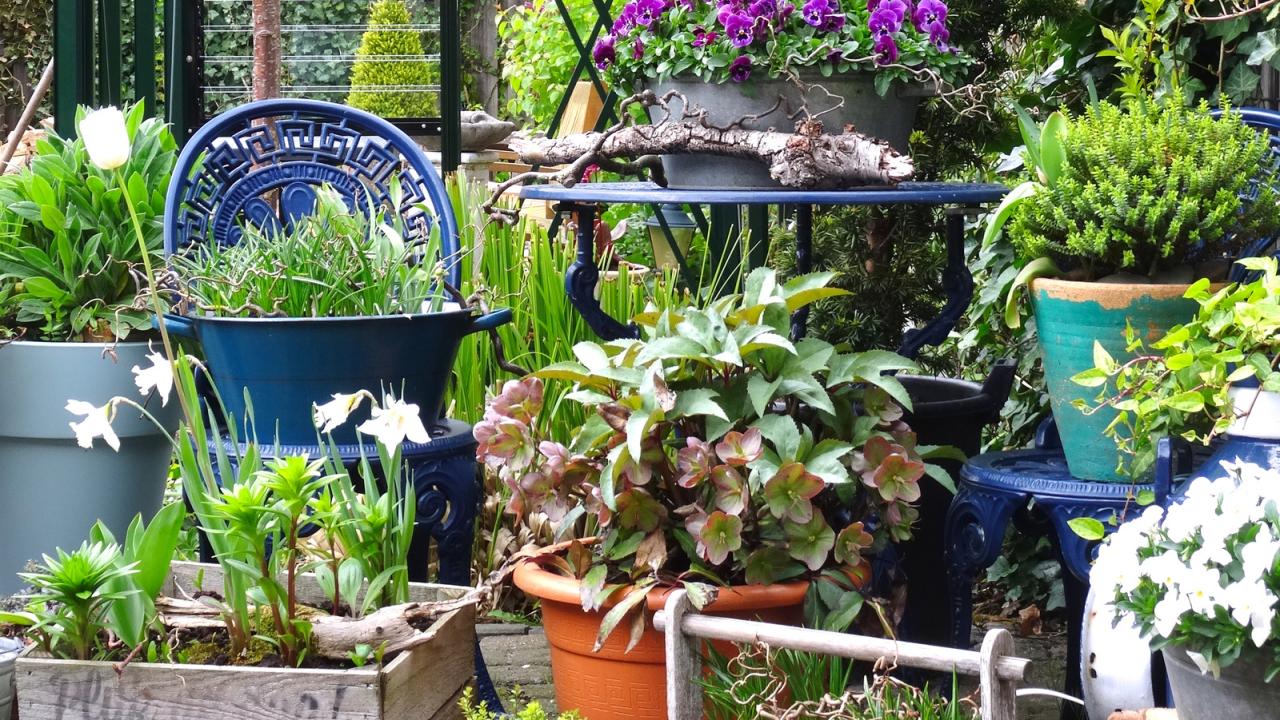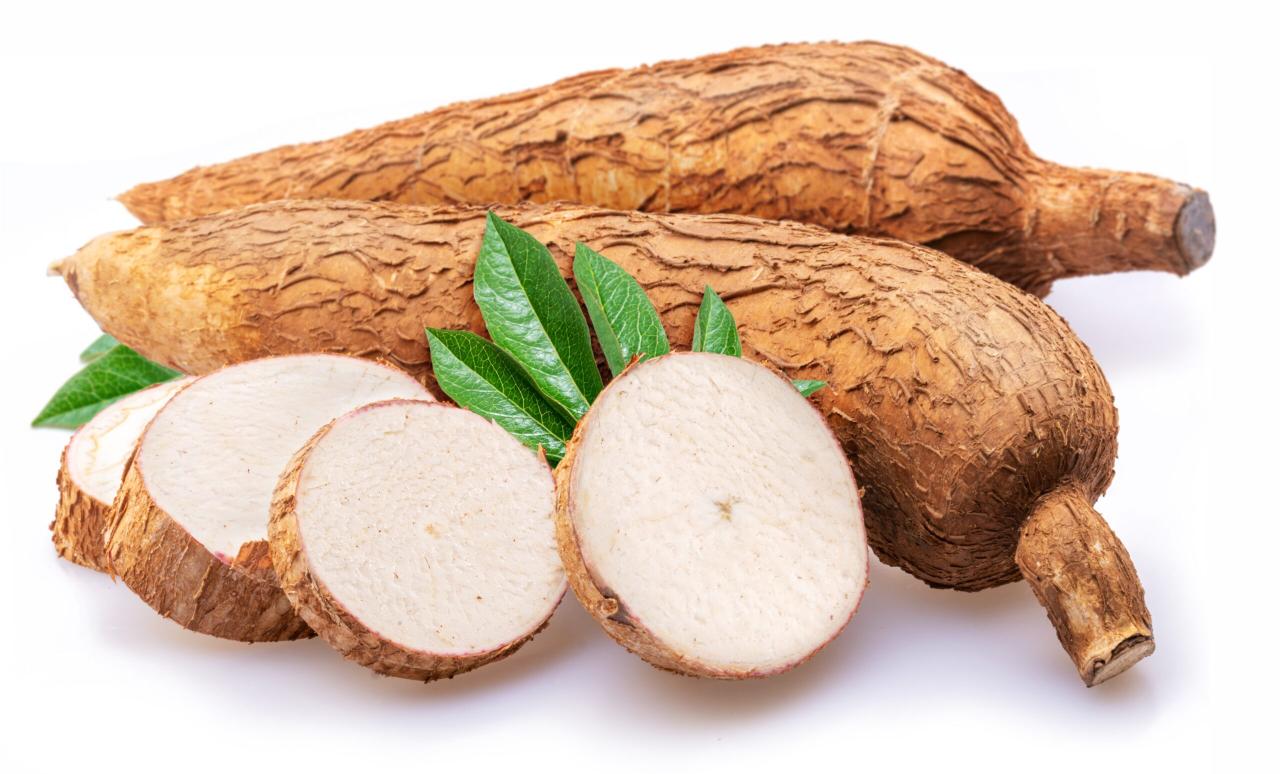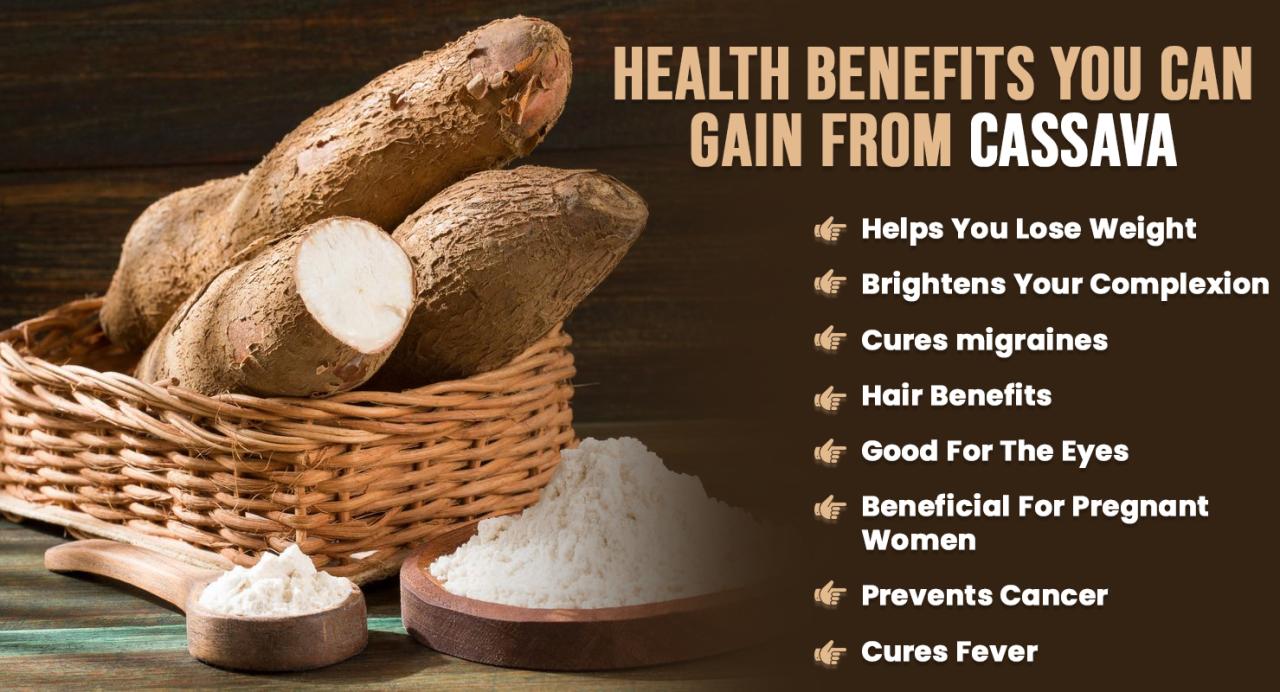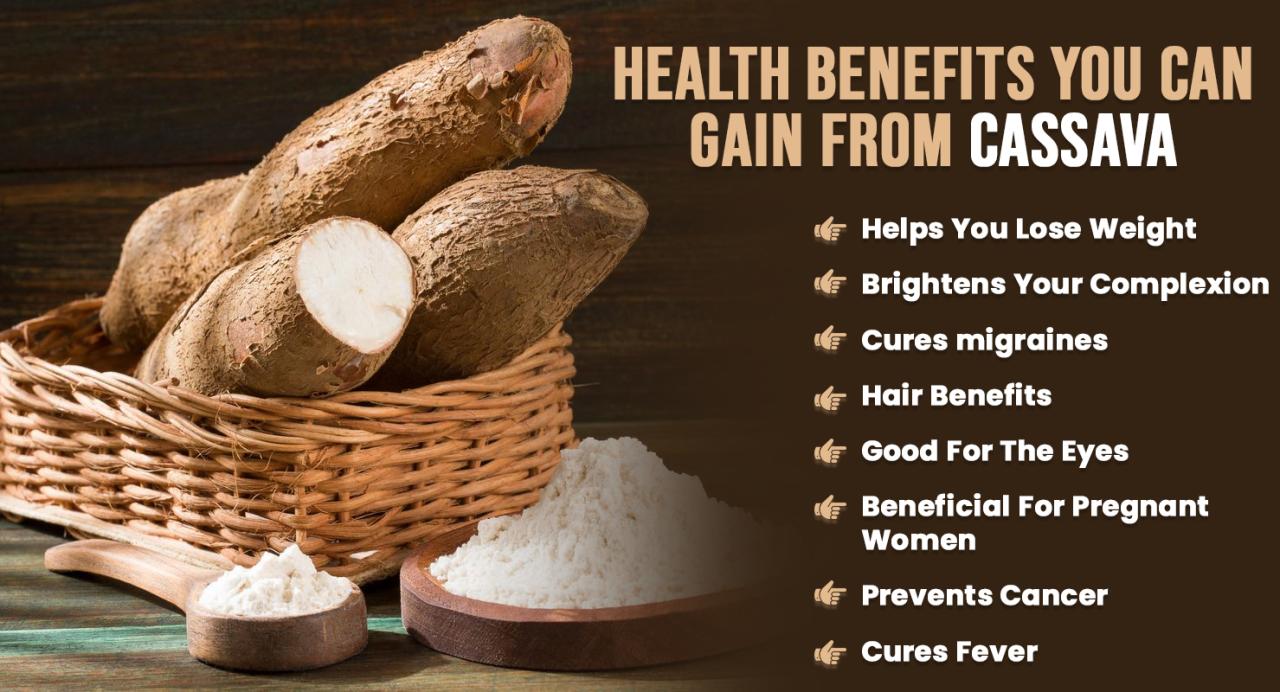Discover the Secrets to Growing Cassava Leaf: How to Achieve a Thriving Garden – Cassava, a staple crop in many parts of the world, is not only valued for its starchy root but also for its nutritious leaves. Cassava leaves, often referred to as “cassava greens,” are a rich source of vitamins, minerals, and fiber, making them a popular ingredient in various cuisines.
Whether you’re a seasoned gardener or a novice enthusiast, cultivating a thriving cassava leaf garden can be a rewarding experience, providing you with a bountiful harvest of this versatile and healthy leafy green.
This comprehensive guide delves into the intricacies of cassava leaf cultivation, equipping you with the knowledge and practical skills to nurture a flourishing garden. From understanding the ideal growing conditions to mastering essential care practices, we’ll explore each stage of the process, ensuring your cassava plants thrive and produce an abundance of delicious leaves.
Understanding Cassava Leaf Growth

Cassava, a starchy root vegetable, is a crucial food source in many tropical regions. Understanding the growth of its leaves is essential for maximizing yield and ensuring a thriving garden. This section delves into the ideal climate conditions for cassava leaf growth, explores the different stages of leaf development, and provides a detailed description of the cassava plant’s anatomy, focusing on the leaf structure.
Ideal Climate Conditions for Cassava Leaf Growth
Cassava thrives in warm, humid climates with ample sunlight. The optimal temperature range for cassava growth is between 25°C and 30°C (77°F and 86°F). However, cassava can tolerate a wider temperature range, from 15°C to 35°C (59°F to 95°F). It is important to note that prolonged exposure to temperatures below 15°C (59°F) can negatively impact growth.Cassava requires a substantial amount of rainfall, with an average of 1,000 to 1,500 millimeters (39 to 59 inches) per year.
However, cassava can tolerate drought conditions for short periods. Regular irrigation is crucial during dry spells, especially during the initial stages of growth.
Stages of Cassava Leaf Development
Cassava leaf development follows a distinct pattern, progressing through several stages.
- Seedling Stage:The first leaves to emerge are small and simple, with a heart-shaped appearance. They are typically light green in color and have a smooth texture.
- Juvenile Stage:As the plant matures, the leaves become larger and more complex, developing lobed edges. The leaves become a deeper green color and develop a rougher texture.
- Adult Stage:The leaves reach their full size and complexity during this stage. The leaves are large, deeply lobed, and have a dark green color. The leaves are also thick and leathery, indicating the plant’s maturity.
Cassava Leaf Anatomy
The cassava plant’s leaves play a crucial role in photosynthesis, the process of converting sunlight into energy. Understanding the leaf’s anatomy provides insight into its functions.
- Leaf Blade:The flat, expanded portion of the leaf, responsible for capturing sunlight and performing photosynthesis.
- Petiole:The stalk that attaches the leaf blade to the stem, providing support and facilitating the transport of nutrients and water.
- Veins:A network of vascular tissues that transport water, nutrients, and sugars throughout the leaf.
- Stomata:Tiny pores on the underside of the leaf that regulate gas exchange, allowing carbon dioxide to enter and oxygen to exit.
Soil Preparation and Planting: Discover The Secrets To Growing Cassava Leaf: How To Achieve A Thriving Garden

Preparing the soil appropriately is crucial for cassava leaf cultivation, as it directly impacts plant growth and yield. Selecting the right soil type and ensuring proper drainage are essential for healthy cassava plants.
Soil Type and pH
Cassava thrives in well-drained, loose, and fertile soils. Sandy loam soil, which is a mixture of sand, silt, and clay, is ideal for cassava leaf cultivation. It offers a good balance of drainage and nutrient retention. The soil should be slightly acidic to neutral, with a pH range of 5.5 to 6.5.
Preparing the Soil
Preparing the soil for planting cassava cuttings involves several steps:
1. Clearing the Land
Begin by clearing the planting area of any weeds, debris, or large rocks. This ensures that the soil is free from competition and provides ample space for cassava growth.
2. Tilling the Soil
Till the soil to a depth of 15-20 cm. This process breaks up compacted soil, improves aeration, and allows roots to penetrate easily.
3. Adding Organic Matter
Incorporate organic matter, such as compost or manure, into the soil. This enhances soil fertility, improves water retention, and provides essential nutrients for healthy cassava growth.
4. Testing Soil pH
Conduct a soil pH test to determine the acidity or alkalinity of the soil. If the pH is outside the optimal range, adjust it by adding lime to increase pH or sulfur to lower it.
5. Fertilizing
Apply a balanced fertilizer, such as 10-10-10, to provide essential nutrients for cassava growth.
6. Preparing Planting Holes
Dig planting holes that are about 30 cm deep and 20 cm wide. This ensures ample space for root development and allows for proper drainage.
Planting Schedule and Spacing
Planting cassava cuttings is typically done during the rainy season. Here are some guidelines for spacing and planting schedule:* Spacing:Plant cassava cuttings at a spacing of 1 meter between rows and 0.5 meters between plants within a row. This spacing allows for adequate sunlight, air circulation, and root development.
Planting Depth
Insert the cassava cuttings into the planting holes at a depth of about 10 cm, ensuring that the buds are facing upwards. This ensures proper root development and prevents the cuttings from rotting.
Planting Schedule
The best time to plant cassava cuttings is during the early rainy season, when the soil is moist and there is sufficient rainfall to promote growth.
Essential Care Practices
Providing the right care for your cassava plants is crucial for maximizing leaf yield and ensuring a thriving garden. This section explores essential practices that contribute to the overall health and productivity of your cassava plants.
Watering Techniques
Consistent watering is essential for healthy cassava growth. Cassava plants require regular moisture to thrive, particularly during the early stages of growth.
- Frequency:Water your cassava plants deeply but infrequently. The ideal watering frequency depends on factors such as climate, soil type, and plant age. Aim to water deeply enough to reach the roots, but avoid overwatering, which can lead to root rot.
- Depth:Deep watering is crucial to encourage root growth and ensure that the plants have access to sufficient moisture. Water deeply enough to reach the root zone, which is typically 12-18 inches deep.
- Timing:Water your cassava plants in the morning or evening to minimize water loss through evaporation. Avoid watering during the hottest part of the day, as this can lead to stress and water loss.
Essential Nutrients and Fertilizers, Discover the Secrets to Growing Cassava Leaf: How to Achieve a Thriving Garden
Cassava plants require a balanced supply of nutrients to support healthy leaf growth and overall plant development.
- Nitrogen:Nitrogen is essential for promoting leaf growth and is particularly important during the early stages of development.
- Phosphorus:Phosphorus plays a vital role in root development and overall plant vigor.
- Potassium:Potassium helps improve water absorption and disease resistance, contributing to a healthy cassava plant.
You can supply these essential nutrients through organic fertilizers like compost or manure, or by using commercially available fertilizers specifically formulated for cassava.
Just like understanding the ideal conditions for a thriving cassava leaf garden, cultivating a stunning Jacaranda tree requires careful attention to its needs. For comprehensive guidance on nurturing this beautiful tree, explore Jacaranda Tree 101: Essential Tips for Growing and Maintaining This Gorgeous Tree.
By applying similar principles of observation, soil preparation, and proper watering techniques, you can achieve a flourishing cassava leaf garden and a breathtaking Jacaranda tree that will grace your landscape for years to come.
Weeding and Pest Control
Regular weeding and pest control are essential for maintaining a thriving cassava garden.
- Weeding:Weeds compete with cassava plants for water, nutrients, and sunlight. Regularly remove weeds from around your cassava plants to ensure they have access to adequate resources.
- Pest Control:Cassava plants are susceptible to various pests, including aphids, whiteflies, and mealybugs. Monitor your plants regularly for signs of infestation and take appropriate control measures.
Harvesting and Utilization

Harvesting cassava leaves is a crucial step in maximizing the benefits of this versatile plant. By understanding the optimal harvesting methods, you can ensure a bountiful supply of nutritious leaves for culinary and medicinal purposes.
Harvesting Cassava Leaves
To obtain the most tender and flavorful leaves, it is recommended to harvest them when they are young and vibrant. This typically occurs around 4-6 weeks after planting, when the leaves are still soft and succulent. Avoid harvesting leaves that are too mature, as they tend to be tough and fibrous.
- Choose the Right Leaves:Select leaves that are vibrant green and free from any signs of damage or disease. The younger leaves, located at the top of the plant, are generally the most tender and flavorful.
- Proper Cutting Technique:Use sharp scissors or a knife to cut the leaves just above the stem. Leave a few inches of the stem intact to allow for new growth. Avoid pulling or tearing the leaves, as this can damage the plant.
- Harvesting Frequency:To ensure continuous growth and a steady supply of leaves, harvest only a portion of the leaves at a time. Aim to leave at least half of the plant’s foliage intact. This allows the plant to recover and continue producing new leaves.
Culinary Uses of Cassava Leaves
Cassava leaves are a popular ingredient in many cuisines around the world, particularly in tropical and subtropical regions. They are a source of essential nutrients and add a unique flavor to a variety of dishes.
- Africa:In West Africa, cassava leaves are a staple ingredient in soups and stews, often cooked with fish, meat, or vegetables. A popular dish is ” Egusi soup,” which features cassava leaves, pumpkin seeds, and other ingredients.
- Asia:In Southeast Asia, cassava leaves are frequently used in stir-fries and curries. They are also incorporated into dishes like ” laksa,” a spicy coconut milk noodle soup.
- South America:In Brazil, cassava leaves are used in a traditional dish called ” Maniçoba,” a stew made with meat, vegetables, and cassava leaves. It is a time-consuming dish, requiring multiple days of preparation to soften the leaves.
Nutritional Value and Health Benefits
Cassava leaves are a nutritional powerhouse, packed with vitamins, minerals, and antioxidants.
Nutrient |
Amount per 100g |
Health Benefits |
|---|---|---|
Vitamin A |
1,000 IU |
Supports vision, immune function, and cell growth. |
Vitamin C |
20 mg |
Boosts immune system, protects against cell damage, and promotes collagen production. |
Iron |
3 mg |
Essential for red blood cell production and oxygen transport. |
Calcium |
50 mg |
Supports bone health, muscle function, and nerve transmission. |
Fiber |
5 g |
Promotes digestive health, regulates blood sugar levels, and aids in weight management. |
Common Challenges and Solutions
While cultivating cassava leaves offers numerous benefits, it’s not without its challenges. Pests and diseases can significantly impact yield and quality, making it crucial to understand and implement effective management strategies. This section will delve into common problems faced by cassava leaf growers and provide practical solutions to ensure a thriving garden.
Just like understanding the intricacies of growing cassava leaves, mastering the art of propagation is essential for any green thumb. Whether you’re seeking to expand your ivy collection or simply want to share its beauty with others, learning the proper techniques is crucial.
A comprehensive guide, like Step-by-Step Guide: How to Propagate Ivy at Home , can empower you to successfully cultivate new ivy plants. This knowledge can be applied to other plant propagation methods, ultimately helping you achieve a thriving garden, just as you would with your cassava leaves.
Pests and Diseases
Cassava leaves are susceptible to various pests and diseases that can hinder growth and reduce yield. Understanding the specific threats in your region is essential for implementing targeted management strategies. This section Artikels common pests and diseases, their symptoms, and sustainable control measures.
Common Pests
Cassava plants can be affected by a range of pests, each with its unique characteristics and damage patterns. Understanding the specific threats in your region is essential for implementing targeted management strategies. This section Artikels common pests, their symptoms, and sustainable control measures.
- Cassava Mealybug:These small, white, cottony insects suck sap from leaves, causing stunted growth and leaf yellowing. They can also transmit viral diseases.
- Cassava Green Mite:These microscopic mites feed on the underside of leaves, causing stippling and discoloration. Heavy infestations can lead to leaf drop and reduced yield.
- Cassava Whitefly:These tiny, white, winged insects feed on plant sap, causing leaf yellowing and wilting. They can also transmit viral diseases.
- Cassava Leaf Miner:The larvae of these small moths tunnel through leaves, creating serpentine trails that weaken the plant and reduce photosynthesis.
Common Diseases
Cassava plants are susceptible to various diseases that can impact their growth and yield. Understanding the specific threats in your region is essential for implementing targeted management strategies. This section Artikels common diseases, their symptoms, and sustainable control measures.
- Cassava Mosaic Disease (CMD):This viral disease causes mosaic patterns on leaves, stunted growth, and reduced yield. It is spread by whiteflies.
- Cassava Bacterial Blight:This bacterial disease causes brown, water-soaked lesions on leaves, stems, and roots. It can spread rapidly in humid conditions.
- Cassava Brown Streak Disease (CBSD):This viral disease causes brown streaks on leaves, stems, and roots. It can severely reduce yield and quality.
- Cassava Anthracnose:This fungal disease causes brown, sunken lesions on leaves and stems. It can spread rapidly in humid conditions.
Sustainable Pest and Disease Management
Sustainable pest and disease management practices are crucial for protecting cassava plants while minimizing environmental impact. This section explores various methods for managing pests and diseases in a responsible and effective manner.
Challenge |
Solution |
|---|---|
Pests |
Cultural Practices |
Mealybugs, Whiteflies, Leaf Miners |
– Maintain good hygiene in the garden, removing weeds and debris that can harbor pests.
|
Diseases |
Cultural Practices |
Mosaic Disease, Bacterial Blight, Brown Streak Disease, Anthracnose |
– Plant healthy, disease-free cassava cuttings.
|
Pests and Diseases |
Biological Control |
Mealybugs, Whiteflies, Leaf Miners |
– Introduce natural predators like ladybugs, lacewings, and parasitic wasps.
|
Diseases |
Biological Control |
Anthracnose |
– Apply fungicides derived from natural sources, such as neem oil or copper sulfate. |
Preventing and Managing Cassava Pests and Diseases
Preventing and managing cassava pests and diseases is essential for maintaining a healthy and productive garden. This section provides practical tips and strategies for minimizing the risk of pest and disease outbreaks.
- Regular Inspection:Regularly inspect cassava plants for signs of pests and diseases. Early detection is crucial for effective control.
- Sanitation:Maintain good sanitation practices in the garden. Remove weeds and debris that can harbor pests and diseases.
- Crop Rotation:Rotate cassava crops with other plants to disrupt pest cycles and prevent disease build-up in the soil.
- Resistant Varieties:Choose pest and disease-resistant cassava varieties.
- Natural Predators:Introduce natural predators like ladybugs, lacewings, and parasitic wasps to control pest populations.
- Beneficial Nematodes:Use beneficial nematodes to control soil-dwelling pests.
- Organic Fungicides:Apply fungicides derived from natural sources, such as neem oil or copper sulfate, to control fungal diseases.
Last Recap
Cultivating cassava leaves is not only a rewarding gardening experience but also a sustainable way to enhance your diet with a nutrient-rich leafy green. By following the steps Artikeld in this guide, you’ll be well-equipped to create a thriving cassava garden that provides a steady supply of healthy leaves.
Remember, patience, consistent care, and a touch of horticultural know-how are the key ingredients for success in your cassava leaf journey.
Q&A
What are the different varieties of cassava plants?
Cassava plants come in various varieties, each with unique characteristics in terms of growth habit, leaf size, and root yield. Some popular varieties include the bitter cassava (Manihot esculenta) and the sweet cassava (Manihot dulcis). Bitter cassava contains higher levels of cyanide and requires processing before consumption, while sweet cassava is generally safe to eat raw.
How long does it take for cassava leaves to be ready for harvest?
The time it takes for cassava leaves to mature and be ready for harvest varies depending on the variety and growing conditions. Generally, cassava leaves are ready for harvest about 3-4 months after planting. You can harvest the leaves regularly, leaving some for continued growth.
Can I grow cassava leaves in containers?
Yes, you can grow cassava leaves in containers, but you’ll need to choose a large enough container to accommodate the plant’s roots. Ensure the container has drainage holes and use a well-draining potting mix. Regular fertilization is essential for container-grown cassava plants.
Are cassava leaves safe to eat raw?
While some cassava varieties are considered sweet and can be eaten raw, it’s generally recommended to cook cassava leaves before consumption. Cooking helps break down any potential toxins and enhances their flavor and digestibility.
